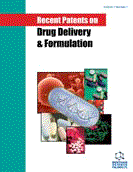Abstract
Background: Visual impairment broadly impacts the ability of affected people to maintain their function and to remain independent during their daily occupations as they grow older. Visual impairment affects survival of older patients, quality of life, can affect a person’s self-ranking of health, may be associated with social and functional decline, use of community support services, depression, falls, nursing home placement, and increased mortality. It has been hypothesized that senile cataract may serve as a marker for generalised tissue aging, since structural changes occurring in the proteins of the lens during cataract formation are similar to those which occur elsewhere as part of the aging process. The published analysis revealed a strong age-dependent relationship between undergoing cataract surgery and subsequent mortality.
Methods: Nuclear opacity, particularly severe nuclear opacity, and mixed opacities with nuclear were significant predictors of mortality independent of body mass index, comorbid conditions, smoking, age, race, and sex. The lens opacity status is considered as an independent predictor of 2-year mortality, an association that could not be explained by potential confounders. Telomeres have become important biomarkers for aging as well as for oxidative stress-related disease. The lens epithelium is especially vulnerable to oxidative stress. Oxidative damage to the cuboidal epithelial cells on the anterior surface of the lens mediated by reactive oxygen species and phospholipid hydroperoxides can precede and contribute to human lens cataract formation. The erosion and shortening of telomeres in human lens epithelial cells in the lack of telomerase activity has been recognized as a primary cause of premature lens senescence phenotype that trigger human cataractogenesis. In this study we aimed to be focused on research defining the mechanisms that underlie linkages among telomere attrition in human lens epithelial cells associated with oxidative stress, biology of the lens response to oxidative damages, aging and health, cataract versus neuroendocrine regulation and disease. The cumulative results demonstrate that carnosine, released ophthalmically from the patented 1% Nacetylcarnosine prodrug lubricant eye drops, at physiological concentration might remarkably reduce the rate of telomere shortening in the lens cells subjected to oxidative stress in the lack of efficient antioxidant lens protection. Carnosine promotes the protection of normal cells from acquiring phenotypic characteristics of cellular senescence. The data of visual functions (visual acuity, glare sensitivity) in older adult subjects and older subjects with cataract treated with 1% N-acetylcarnosine lubricant eye drops showed significant improvement as compared, by contrast with the control group which showed generally no improvement in visual functions, with no difference from baseline in visual acuity and glare sensitivity readings.
Results: N-acetylcarnosine derived from the lubricant eye drops may be transported into the hypothalamic tuberomammillary nucleus (TMN) histamine neurons and gradually hydrolyzed. The resulting L-histidine may subsequently be converted into histamine, which could be responsible for the effects of carnosine on neurotransmission and hormone-like antiaging and anti-cataract physiological function.
Conclusion: The research utilizing the N-acetylcarnosine lubricant eye drops powerful therapeutic platform provides the findings related to the intraocular uptake exposure sources as well as a timing dosage and duration systemic absorption of said preparation from the conjunctional sac reaching the hypothalamus with activities transfer into the hypothalamic-neuroendocrine pathways affecting across the hypothalamus metabolic pathway the telomere biology and cataract disease occurrence, reversal and prevention and the average expected lifespan of an individual. Such findings can be translated into clinical practice and may provide a basis for personalized cataract disease and aging prevention and treatment approaches.
Keywords: Aging, basic preventive health care, biological marker, carnosine, cataract disease and mortality, cataract treatment, histamine neurons, human lens epithelial cells, hypothalamic-neuroendocrine pathways regulation, N-acetylcarnosine ophthalmic prodrug, personalized cataract disease and aging prevention and treatment approaches, reversal and prevention, telomerase, telomere-dependent senescent phenotype, telomere shortening, tuberomammillary nucleus (TMN).
Graphical Abstract
 48
48 1
1














